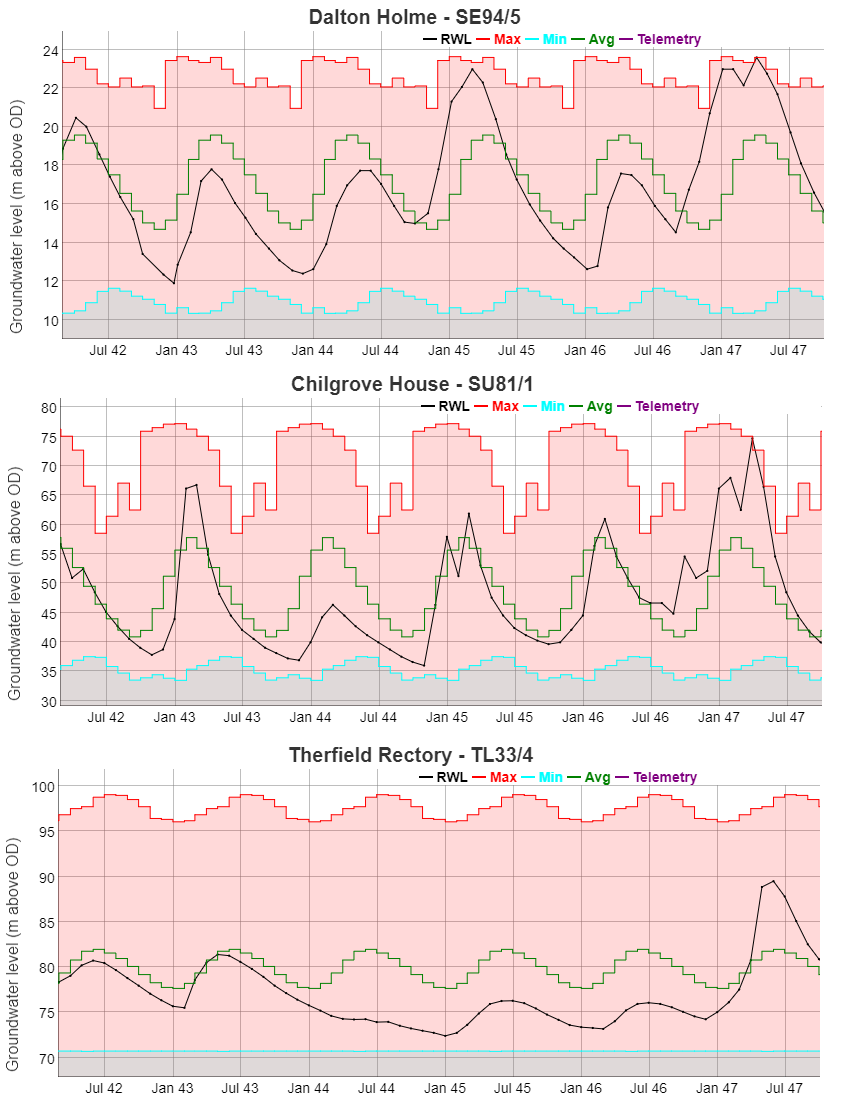Jump to: |
|
 |
 |
























































































































 |
The 1940s was a decade with multiple periods of drought across the country. The decade began with extreme/severe deficits in Western Scotland and parts of North East England for both SSI-12 and SSI-3. Drought conditions were generally mild in other regions with the exception of Anglian and Southern England for SSI-12 where flows were mostly above normal. For the rest of the 1940s however, drought was more coherent across the county in terms of occurrence (although not in terms of severity) for both accumulation periods. Other notable drought phases in the decade occurred in southern and central England and south Wales in 1944, which extend right into Scotland for SSI-3; in western Scotland and catchments across northern England, Northern Ireland and north Wales in 1946; across the UK in winter 1947 for SSI-3, and prolonged drought conditions (albeit mild) across much of England and Wales 1948-1950 with severe drought in North East England in 1949 for SSI-12. The bulk of the 555 (437 for SSI-3) events identified during the 1940s period are almost entirely outside of the top 10 events for SSI-3 and SSI-12. |
 |
Across the Chalk groundwater passed in and out of drought throughout the early to mid-1940s. The groundwater drought first found expression in the Chalk of Yorkshire and was most persistent in eastern England in the region of Cambridgeshire and the east Chilterns. At Dalton Holme in Yorkshire groundwater levels were below average during 1942-1944 and again in 1946-1947, whereas in the southern Chalk, for example at Rockley and Chilgrove House, the drought was shorter and consisted of a single episode with groundwater levels at their lowest in 1943-1944. At Therfield Rectory, in the eastern Chilterns and between Dalton Holme and Chilgrove House, groundwater drought conditions didn’t start until 1944, reached a peak in the winter of 1945-46 and persisted until 1947. |
Click images to enlarge
 |